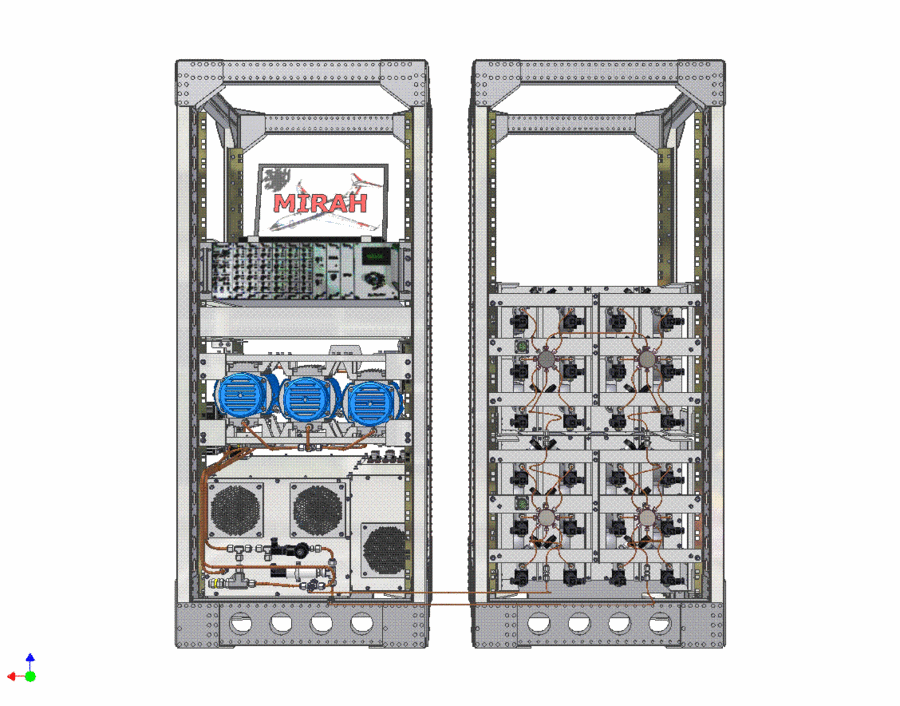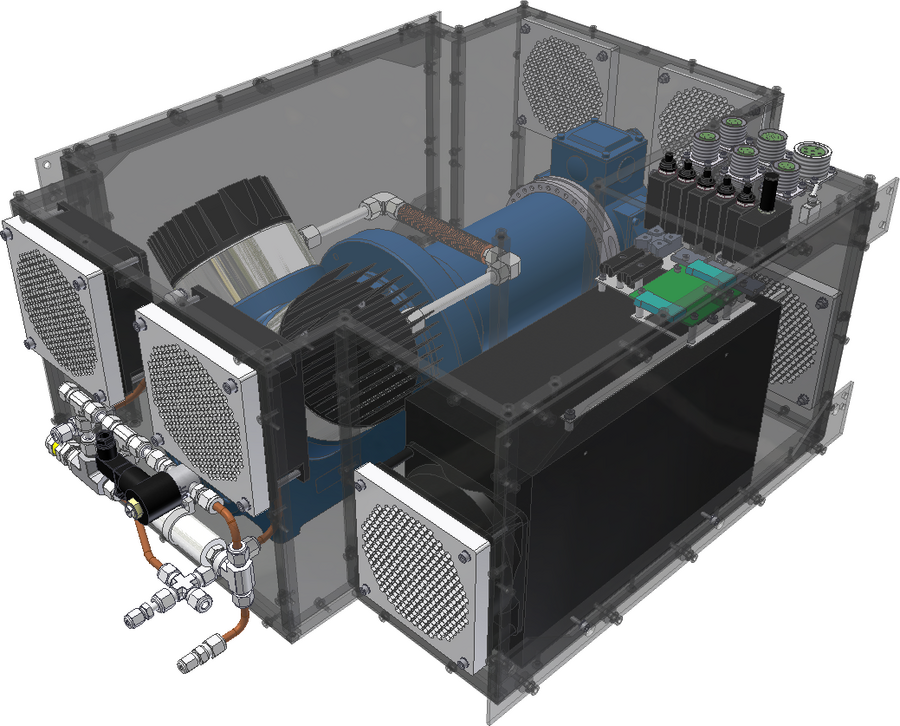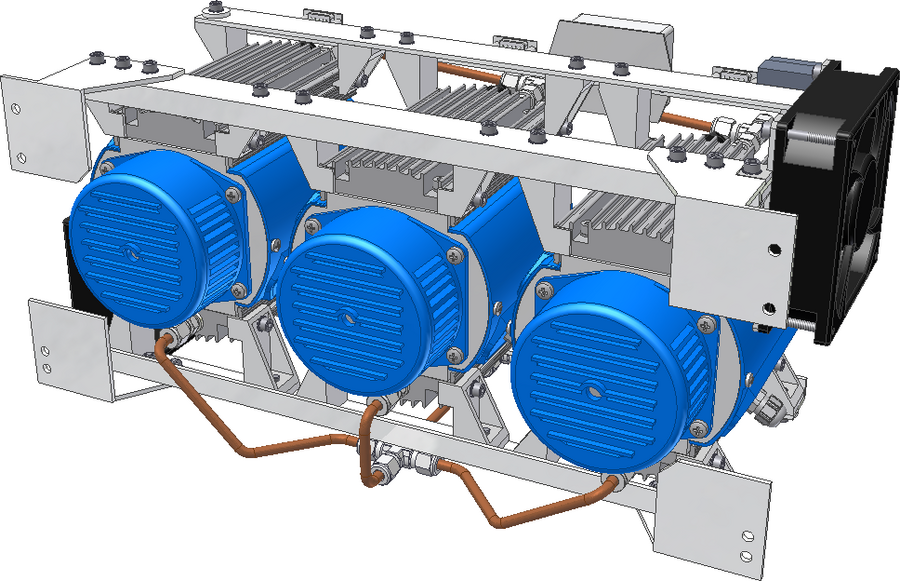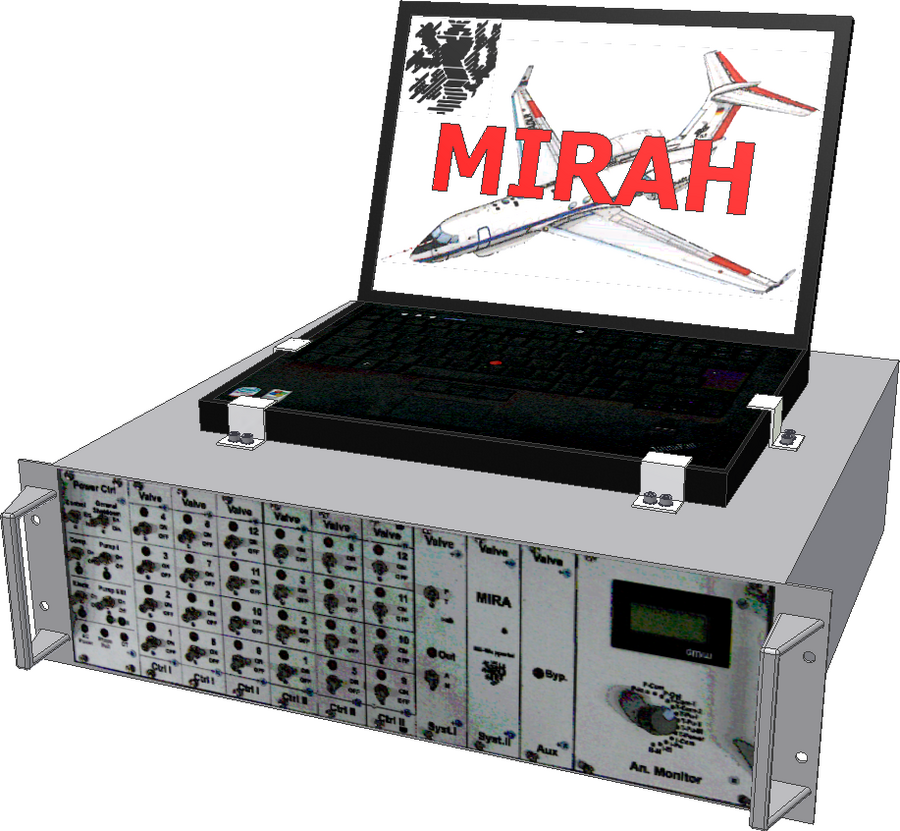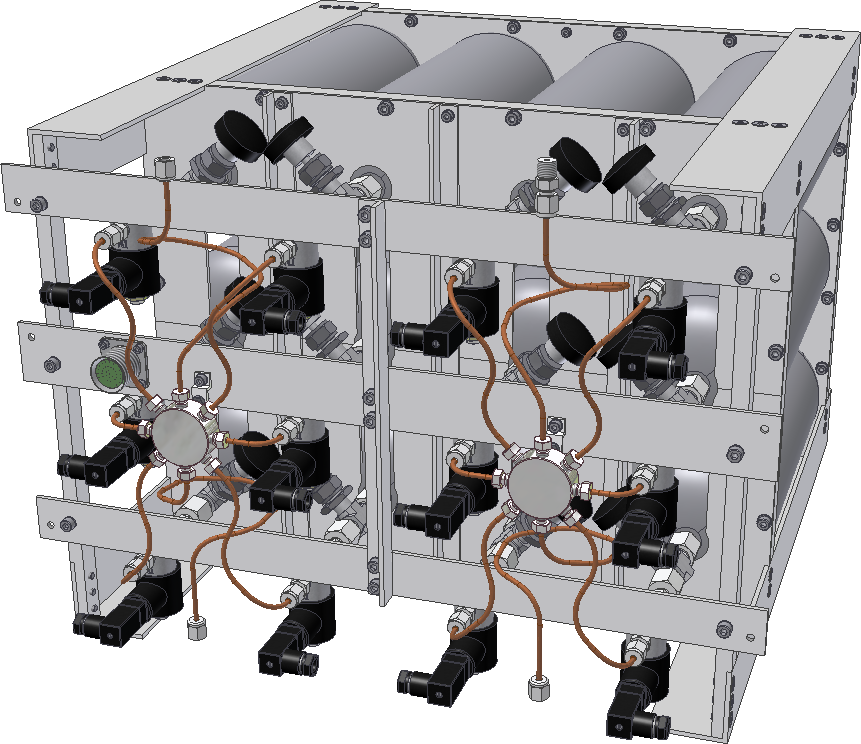MIRAH - the isotope collector on the HALO high-altitude research aircraft
Functional Principle
The function of MIRAH (Measurements of Stable Isotope Ratios in Atmospheric Trace Gases on HALO) consists in taking external air samples and storing them in Sulfinert™-coated sampling containers. A maximum of 24 outdoor air samples are possible during a flight. The air samples are subsequently analyzed in the laboratory for stable carbon isotope ratios in volatile organic compounds (VOC) after successful filling of the sampling containers.
The procedure of air sampling (collection mode) is as follows:
The two container modules each consist of 12 printable cylindrical sampling containers made of stainless steel 304L (Hoke, Bad Vilbel) with a maximum operating pressure of 15 bar. The surface of the inside is Sulfinert™ coated (Restek GmbH, Bad Homburg). The coating provides a passivation of the metal surfaces against active, polar and corrosive air components. The membrane compressor (KNF Neuberger) uses three sampling diaphragm pumps (Vacuubrand) to fill a sampling tank up to approx. 15 bar with external air. For this purpose, the electronic unit opens the electromagnetic valve (GEMS) at the inlet side of the sampling container to be filled, and at the same time closes the outlet line by means of a further electromagnetic valve. When the filling pressure reaches 15 bar absolute, the electromagnetic valve at the container inlet automatically closes the air supply to the container while the electromagnetic valve in the outlet line releases the exhaust gas line again. If the filling pressure is not reached, the electromagnetic valve at the inlet of the corresponding air sampling container is automatically closed after 5 minutes and the process is terminated. This covers possible problems with the pressure cut-off or by existing leaks. In addition to this automatic mode, there is the possibility to manually control the electromagnetic valves. The filling operation of a container can in this case again be terminated automatically by means of the pressure cut-off or manually by means of a switch.
One of the three diaphragm pumps is permanently in operation (flushing mode). This results in a continuous rinsing of the line system. For later analysis of the process, the pressure, the status of the electromagnetic valves, and some other housekeeping signals (e.g., temperatures) are stored.
MIRAH is a stand-alone system, operating at 115V / 200V, 400Hz, 3 phases. The system is controlled via a mobile laptop. It is integrated in two R-228 T-racks (DLR, Oberpfaffenhofen) in the HALO luggage compartment. The MIRAH-Rack-1 contains the two container modules, each with 12 sampling containers. The compressor unit, the diaphragm pump insert, the RPDB_AC and the electronics module are located in MIRAH-Rack-2.
A HALO standard inlet with a pylon height of 35cm is used for the first HALO demonstration missions. The intake manifold is rear-facing and consists of a 1/4" AD Sulfinert™ coated stainless steel tube.
In order to be able to measure even reactive substances later in the laboratory on stable carbon isotope ratios in VOCs, it may be necessary to remove the ozone present in the outside air prior to collection in the sampling containers. This is accomplished by an inlet pipe heater, (Approx. 1 m) to approx. 100°C heatable stainless steel pipe, the inner surface of which is not passivated. The heating is operated at about 70°C during a flight.
The electrical supply is via the RPDB_AC housed in MIRAH-Rack-2. The primary voltage supply is 115V / 200V, 400Hz, 3 phases. The energy requirement is 650W in the rinsing mode, i.e. permanently, and intermittently for a few minutes to 1200W in collective mode.

